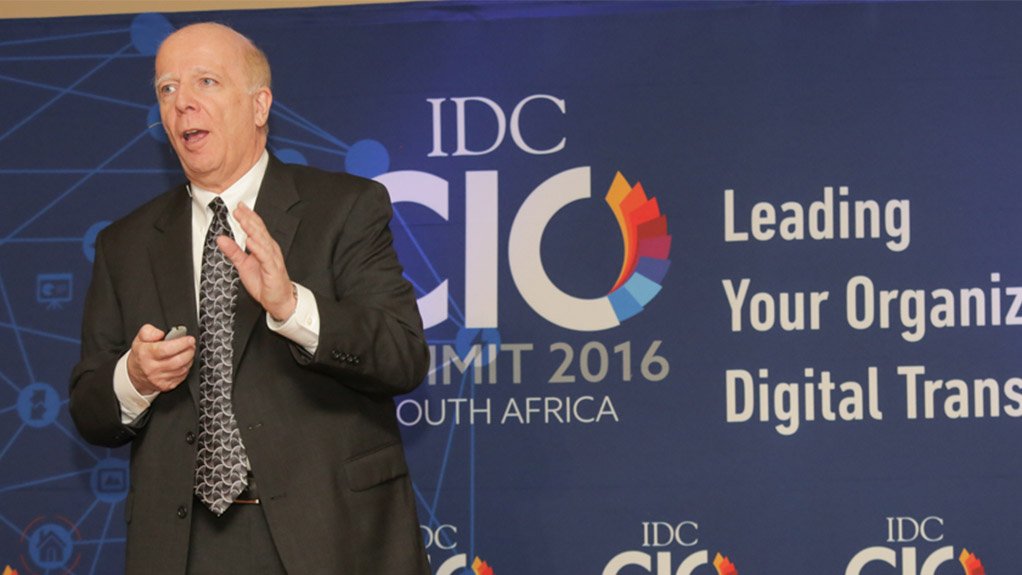Leadership key to navigating choppy digital transformation waters









ROBOTICS AND AUTOMATION Many routine functions within businesses can be automated and accelerated to improve the speed with which a business can supply services
DIGITAL SUPPLY CHAIN Companies can use the capabilities of their supply chain partners to rapidly add new services for customers
DIGITAL EDUCATION New digital training and educational tools will enable continuous development of skills internally and throughout individuals’ careers
Photo by Bloomberg
JOSEPH PUCCIARELLI Digital capabilities and systems are already impacting on the value of businesses
YANNICK DECAUX Iterative and progressive projects can be used to digitally transform an enterprise in line with business objectives
DIGITISATION Many industries are already transitioning to digital operating models
REENGINEERING Companies must capitalise on their capabilities to deliver new services to new and existing markets, and can add additional competencies to completely change the markets they serve
Successful digital transformation – the digitisation of enterprises, their revenue models and operating models – requires support and direction from management, say several domestic and international information technology (IT) experts.
Research and consultancy firm the International Data Corporation (IDC) group VP Joseph Pucciarelli highlights that 65% of large engineering firms worldwide can be considered information-based businesses and 25% of manufacturers derive about 50% of their revenue from digital services.
He cites German sports car manufacturer Porsche CIO Sven Lorenz, who exposed the company’s leaders to new technologies and operating models for 18 months prior to developing new products – specifically smart applications (apps) for the cars – for the 2015 range.
“By March 2015, Porsche’s sales were rising, but the company reduced its earnings forecast for investors, stating that it had to continue to invest in new platforms and technologies and develop new digital services to be a competitive company,” he says.
Research conducted over the past year by the IDC found that about 80% of organisations are overhauling their digital customer engagement and support systems, and about 66% aim to include digital transformation in their medium- term strategies.
CEs and managers must provide a clear vision of how the company aims to transition to new digital operating models and what they aim to achieve through these projects, says PwC South Africa partner and Industry 4.0 head Pieter Theron.
Digitisation initiatives typically use a phased approach, with the first phase involving small and narrow-focus projects that are owned at a business-unit level, usually to improve customer and supply chain communications, says IT and telecommunications multinational Orange Business Services South Africa country manager Yannick Decaux.
Executive support for digitisation also requires that designated funds be allocated for experimental short-term projects, with successes serving as proof of concepts, says Theron.
However, even short-term and experimental projects must be aimed at achieving specific goals and objectives to support the company’s digital transformation.
The second phase involves integrating the multiple digital transformation initiatives and sharing data internally, which will improve interoperability between business functions, notes Decaux.
“The third phase is then a transition to a digital ecosystem, which involves being more open to partners and redefining the company’s broader value chain.”
Speed and connectivity are critical; the CIO must often also be a chief innovation officer, he adds.
Think Digital
The easiest approach to adding new services and capabilities is often best. It is not necessary for companies to own or create new systems, and linking and using existing systems from suppliers and partners enable companies to rapidly add proven systems that add value, explains PwC Germany technology consulting division partner Christoph Hagmann.
“Also, the information that companies have is valuable and can be used to augment services digitally. There is significant value in knowledge and sharing data to fulfil customer expectations,” he says.
Leaders need to use a different paradigm to identify potential transformative digital projects, says Theron. Leaders must think about how to use digital capabilities to tap into hitherto unrealised business opportunities, and should also use disruptive systems or technologies produced by other companies to augment their processes and capabilities.
“The CIO’s role and responsibility now shift from a focus on what is visible to what is valuable, and from a command and control style of management to a more visionary style. This also helps to educate and motivate employees in the company on what digital transformation is and what it means for the company ” says Decaux.
Integration of the various operational functions and departments of companies means that multidisciplinary and cross-departmental teams, constituted to develop and implement various projects, can easily be disbanded and reformed for new projects, which will help distribute experience and practices across the business, avers Theron.
Companies aiming to thrive in a changing environment must investigate new ways of applying their existing capabilities, often augmented with the addition of noncore capabilities, to provide new services and enter new markets and industries, says North-West University and Cornell University academic and futurist Pieter Geldenhuys.
By way of example, he postulates that a photo- graphy company with significant optical and chemical capabilities, and traditionally focused on the consumer sector, could potentially add DNA analysis capabilities and start to provide genetic testing services for the healthcare sector. Such industry-disrupting changes will become more prevalent as companies identify new ways of providing services and value, he notes.
Digital Value
Companies in South Africa surveyed by PwC aim to invest about R1-billion over five years in digitisation, which equates to about 5% of their turnover, and PwC expects more will be invested going forward.
The firm’s research highlights that about 70% of companies implementing digital commerce and transformation projects expect efficiency gains higher than 10%, while 73% expect to lower costs by more than 10% and grow revenue by more than 10%.
Justification for digital enterprise investments is often difficult, as determining their value can be difficult. About 60% of companies say that accessing budgets for projects is the main barrier to digital transformation, followed by ensuring that security remains effective while integrating technology systems, says Decaux.
However, Hagmann states that digital transformation does not require much technology or many systems. It is rather a case of the board and executive understanding that it is a combination of business and IT – business units come up with the ideas and the IT department helps to implement them.
Any digital transformation, therefore, stems from an understanding of the business and its operations, as well as creative approaches to bring digital technologies into all its domains.
To illustrate the impact of digital value on traditional industries, Pucciarelli highlights the acquisition of the Starwood Hotel group by Marriott International. Starwood is a multinational hospitality group, but has an extremely effective customer experience and loyalty programme.
“The customer experience programme and the systems it had for customer experience management materially affected the purchase price of the company,” he emphasises.
Barriers & Enablers
Increasing integration internally and with external partners will add significant amounts of data that business leaders will have to manage and understand.
“How organisations transition to digital enterprises depends largely on the capabilities of the leaders and the digital capabilities in the organisations,” says digital, automotive and enterprise resource planning systems company Britehouse COO Bani Kgosana.
Companies that have mastered digital transformation are typically about 26% more profitable than their peers, he adds.
Advanced analytics systems and cognitive technologies, including IBM Watson, learn at scale, reason with purpose, and interact with humans through natural language – a critical tool that business leaders can use to shape and evaluate their long-term strategies, while query- ing, modelling and managing short-term projects and business goals, says IBM South Africa Research Lab director Dr Solomon Assefa.
Cognitive systems are typically only available through cloud systems, such as Watson or Google’s DeepMind, owing to the processing resources required. However, this democratises the signifi- cant investments of these technologies, making them available for anyone, including students and start-ups.
“Many of the systems learn and reason from their interactions with us and from their experiences with their environment. The eventual aim is to develop cognitive computing.
“IBM’s Watson cognitive computing system can already illuminate aspects of our world that were previously invisible – patterns of and insight into unstructured data, in particular – allowing us to make more informed decisions about consequential matters, such as diagnosing cancer or whether an investment is worth the risk,” highlights Assefa.
Watson started out as a research grand challenge: to develop an advanced question-and- answer system using a very high end supercomputer. Within a few years, the technology was scaled out and thousands of users are now accessing the code to solve their own grand challenges in education, energy and healthcare. And, most importantly, they can do it all from an iPad, he adds.
While the skills and in-house capabilities required by enterprises and suppliers will change as they digitise, which must be taken into account, digital educational systems enable people to hone and broaden their skills and are an effective way of managing the changes in culture in a company or department.
“While there is a skills gap inhibiting transitions to true digital enterprises everywhere in the world, this gap is typically much smaller than companies expected before embarking on their digital transformation journey,” affirms Hagmann.
Comments
Press Office
Announcements
What's On
Subscribe to improve your user experience...
Option 1 (equivalent of R125 a month):
Receive a weekly copy of Creamer Media's Engineering News & Mining Weekly magazine
(print copy for those in South Africa and e-magazine for those outside of South Africa)
Receive daily email newsletters
Access to full search results
Access archive of magazine back copies
Access to Projects in Progress
Access to ONE Research Report of your choice in PDF format
Option 2 (equivalent of R375 a month):
All benefits from Option 1
PLUS
Access to Creamer Media's Research Channel Africa for ALL Research Reports, in PDF format, on various industrial and mining sectors
including Electricity; Water; Energy Transition; Hydrogen; Roads, Rail and Ports; Coal; Gold; Platinum; Battery Metals; etc.
Already a subscriber?
Forgotten your password?
Receive weekly copy of Creamer Media's Engineering News & Mining Weekly magazine (print copy for those in South Africa and e-magazine for those outside of South Africa)
➕
Recieve daily email newsletters
➕
Access to full search results
➕
Access archive of magazine back copies
➕
Access to Projects in Progress
➕
Access to ONE Research Report of your choice in PDF format
RESEARCH CHANNEL AFRICA
R4500 (equivalent of R375 a month)
SUBSCRIBEAll benefits from Option 1
➕
Access to Creamer Media's Research Channel Africa for ALL Research Reports on various industrial and mining sectors, in PDF format, including on:
Electricity
➕
Water
➕
Energy Transition
➕
Hydrogen
➕
Roads, Rail and Ports
➕
Coal
➕
Gold
➕
Platinum
➕
Battery Metals
➕
etc.
Receive all benefits from Option 1 or Option 2 delivered to numerous people at your company
➕
Multiple User names and Passwords for simultaneous log-ins
➕
Intranet integration access to all in your organisation


























